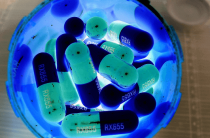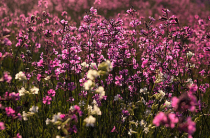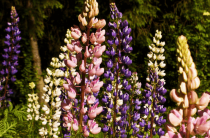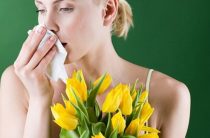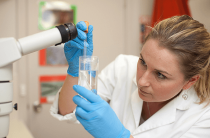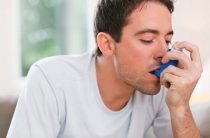Flower allergy is an allergic reaction that occurs in response to the ingestion of allergens that are contained in the pollen of a flowering plant. This disease is characterized by a seasonal course. Since the pollination of a certain plant does not last long, the patient suffers from allergy attacks 3-5 weeks a year.
Despite the short duration, the severity of allergy symptoms can be significant, up to an acute form of allergic reactions requiring urgent medical measures. Symptoms caused by the ingress of an allergen can cause significant inconvenience to the patient and force him to change his usual rhythm of life, at the time of pollination of the plant - the allergen.
Flower allergy symptoms
- Respiratory symptoms. Respiratory manifestations make up the majority of the symptomatology of an allergy to flowering. This is manifested in swelling of the nose, making it difficult for the patient to breathe; allergic cough; frequent sneezing;
- Symptoms of conjunctivitis. They are also common symptoms of allergies to flowering. These symptoms are expressed as redness of the eyes, discomfort in the eyes, constant tearfulness;
- General weakness and drowsiness;
- Irritability occurs when an allergen causes excitation processes in the nervous system;
- dermatological manifestations. This group of symptoms, although less common than respiratory and conjunctivitis-like, is still quite common. A patient with allergic dermatitis feels redness and constant itching of the skin, spreading urticaria, rashes with serous contents, when traumatized, purulent discharge is formed.
- Laryngeal edema and bronchospasm are extremely acute manifestations of an allergen reaction that occur with anaphylactic shock and Quincke's edema.
- Asthmatic symptoms, characterized by the appearance of shortness of breath, a pressing feeling in the chest, impaired breathing and a specific cough.
Flower allergy. What to do?
First, you need to find out which particular plant (or several) you are allergic to. This is done using special test kits that include plants specific to your area - allergens. This method is called “scarification tests”, from the word “scarification”, that is, scarification.
The essence of this method is that special incisions are made on the skin through which allergens are introduced. This is done with a minimum depth of invasion and the amount of the substance - the allergen, so as not to cause too strong reactions. Despite all precautions, some patients may experience overly acute reactions. In this case, constant medical supervision is necessary for several days. The patient and the people of his immediate environment should be familiar with the measures of emergency therapy in the development of severe allergy symptoms.
Upon contact with the allergen, the patient's skin undergoes noticeable changes, abscesses, blisters, redness, itching and peeling occur.
Another reliable method is the analysis for specific antigens. This diagnostic method is one of the most accurate methods for determining a specific allergen.
Also, to assess the general condition of the patient, it is necessary to take a blood test. In principle, this is the very first medical examination for any pathologies. Nevertheless, this is not an empty formality, since the composition of the blood speaks both of general well-being and the presence of special substances that stimulate an allergic reaction.
Flower allergy treatment
barrier method. The essence of this method of treating allergies is to eliminate the contact of the patient with the substance - the allergen. The problem is that this is not always possible. It is better, of course, to move at the time of flowering of the allergen plant to places where it does not grow. But it is not always possible to use this method, in view of the fact that various circumstances of the patient's life may make him unable to move.
However, if contact is not eliminated, then everyone can limit contact with the allergen. Indeed, often there is a direct relationship between the amount of allergen that has entered the body and the strength of allergic reactions.
Patients allergic to flowering need to install special nets on windows with small gaps, which will prevent the components of the allergenic flora from entering the house. Wet cleaning of the premises minimizes the amount of dust, which often contains elements of plant pollen. Walking is best done in the evening, because during the day, in dry weather, pollen spreads most actively.
Ways to clean the air in the room
Air conditioning. The essence of this method lies in the fact that the use of air conditioners allows you to clean the air passing into the room. The main thing is to carefully read the operating instructions and change the filters as often as possible. This is due to the fact that dirty filters disrupt the operation of the air conditioner and a substance - an allergen - can enter the room through them. Consult with a specialist to choose the device that has the most powerful filtration system. Also, if you have your own transport, it is advisable to install a special air conditioner for the car interior.
Special air purification methods
The use of special cleaning systems is also an effective way to clean the room. Their essence is that they contain filters on which gases, dust and other large substances are retained. Air ionizing filters are also used, they are based on the generation of an opposite charge, as a result of which dust molecules, the main carrier of allergens in homes, react and settle on the filter.
Air humidifiers allow not only to clean, but also to control the optimal humidity of the air, which is very important for patients with asthmatic manifestations.
Immunotherapy for allergy to flowering
Immunotherapy is a very effective method for suppressing allergy symptoms. Its essence lies in the fact that substances allergens are introduced into the patient's body for a long time in minimal dosages. As a result of such actions, the patient's immunity, as it were, gets used to the allergen substance and does not take a response. The effect of this method can last up to several years.
If you are allergic to flowering, it is advisable to start using the immunotherapy method in autumn or winter, so that the body has time to get used to the allergen and stops responding to it by the time of flowering. These are only general recommendations, of course, the specific timing of therapy should be selected by your attending physician. This largely depends on the period of flowering of the allergen.
Drug therapy for allergy to flowering
The selection of drugs for allergy to flowering has its own characteristics, since the main symptoms of this type are manifestations of conjunctivitis and respiratory symptoms.
A common option for all allergies is the use of H1 blockers of histamine and corticosteroids to relieve allergy symptoms.
Antihistamines
These substances have the ability to block histamine type H1 receptors. This leads to the fact that the immune response in the body does not have time to form. Modern antihistamine preparations are highly specific, that is, they do not affect other organs and their systems, and also do not have the side effects of their predecessors (nausea, weakness, lethargy, diarrhea).
The only drawback of the latest generation of antihistamines is that these substances are excreted through the kidneys. For this reason, older people and people with impaired kidney function are prescribed other drugs, or these are used in reduced dosages.
Antihistamines work much better when applied before exposure to the allergen rather than after exposure.
Corticosteroids
Corticosteroid drugs are also used for allergies to flowering. Their action is based on the anti-inflammatory properties of cortisol. Being an analogue of this hormone, they affect the removal of most allergy symptoms (dermatic manifestations, swelling, respiratory symptoms). Injectable corticosteroids are given in short courses of 5 to 7 days to relieve allergy symptoms. For corticosteroids in the form of creams and ointments, longer use is possible, but it should also be under the supervision of a physician, since corticosteroids that enter through the skin still have the property of being deposited in the tissues.
Anaphylactic shock
Anaphylaxis is an extreme manifestation of an allergic reaction in hyper-acute sensitivity of the body. In particular, in some patients, such a reaction may develop as a result of contact with pollen.
A critical drop in pressure, which is accompanied by swelling of the larynx, is potentially life-threatening. To relieve acute symptoms of anaphylactic shock, a whole range of medications is used: adrenaline, corticosteroids (in dosages that are many times higher than the therapy of less acute forms), histamine blockers. The first symptoms of anaphylaxis are: nausea and vomiting, swelling of facial tissues, acute pain in the abdomen.
Asthmatic manifestations
This symptomatology is very characteristic of an allergy to flowering. When an allergen enters through the lungs, the classic symptoms of asthma develop: choking, coughing, and hoarse breathing. To relieve such manifestations, anti-asthmatic drugs are used to relieve bronchospasm and facilitate breathing.
Remember that the diagnosis and treatment of any disease should be carried out by specialists. We strongly recommend that you consult a doctor at the first appearance of the described symptoms.
